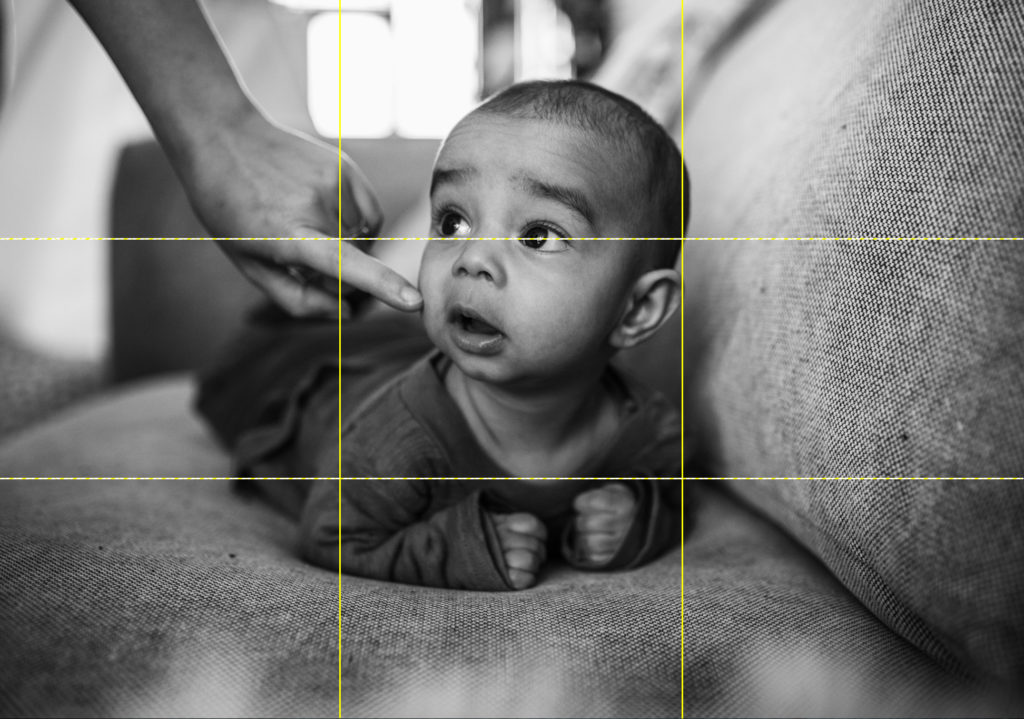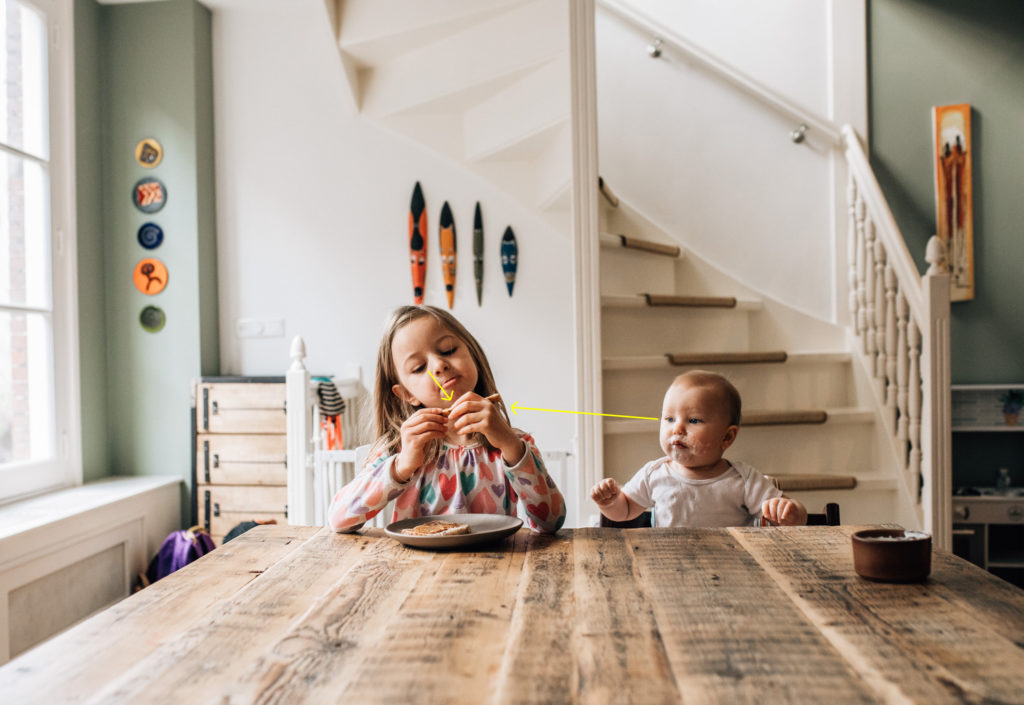To help you improve your photos, a long time ago I wrote a post with 9 tips to take better pictures of your children, you can read it here.
But if you’re already moving a lot, you let your children be children and don’t force them to pose, and you understand how important the light is and how it actually makes ALL the difference, then we can talk a bit about composition and how this powerful element will help you to improve your photos.
SOME NOTES ON COMPOSITION
Photographs contain a visual message, they comunicate something, they tell a story.
They are read and interpreted by us and that’s why some images challenge us and others make us smile or cry out of emotion even when we have no idea of who are the subjects in that photo.
Light is the most important element of photography (with no light there’s no photo), but there are other elements that will narrate the story.

Often when we photograph our own children (or when we take photos during our holidays), we’re so aware of what’s going on that we forget to put some elements inside the frame (or to avoid them). But if we show the photo to someone who wasn’t there when we took the picture, we have to explain what was going on, what was our child doing, where we were, why we took the photo.
In a few years, we’ll probably forget what was going on and even if we have the photo, we’ll be missing the memory.
This is why composition is so important.
RULE OF THIRDS AND EYE LINES
We could go very deep into visual literacy, but because this article pretends to be very basic, I will mostly focus on positioning using the rule of thirds (because most cameras and post-processing software include this visual grid to help you be more clear in your message) and the eye lines.
There are other elements as important as these ones. You can, for example, check this link that explains framing very well and it will help you to improve your photos a lot. But first, if you’re still not sure about how composition works, you might want to continue reading the following.
WHAT IS THE RULE OF THIRDS?
Have you ever tried to post-process a picture with any software and you saw a grid that divides the image? That’s probably the rule of thirds. It mostly appears when we want to crop our image and it looks like this:

The Rule of Thirds is a common compositional technique that divides your frame into an equal, three-by-three grid with two horizontal lines and two vertical lines that intersect at four points. Please take into account that this is not the only rule (and not the one I use the most, but it’s the one that always works and the one that we all start with).
The lines and the points are there to help you position the most important elements, and it helps you tell the story better.
But how? By placing the most important elements of the image at each line intersection.


For portraits, positioning the eyes on the top third-line puts the model’s face slightly off-center which adds interest.


Sometimes when photographing a landscape, there’s no such thing as a point of interest. In this case, you can use one of the horizontal lines to position the horizon:


EYE LINES
Ok, because we’re talking about how to improve your photos, and particularly, how to improve the photos you take of your children/family, the other element you should pay attention to is the eye lines.
Because our brain is always trying to fill everything with information, when looking at a portrait we will always try to figure out what the subjects are looking at. That’s why their gaze will guide our eyes to a different point of the image: towards the object to which the gaze is directed.
If that thing is not in the frame, we will feel like there’s something missing and it will create some tension.

But besides avoiding tension and helping our brain to complete the information, eye lines help to tell the story by enhancing elements and most importantly, connections.
In the picture below, you can see that mom and dad are looking at their daughter and she’s looking at one of the elements I wanted to highlight: the holding hands.

You can also check the same picture with the rule of thirds, and to see how mom’s face is on one of the focal points and the hands are on the other one:

In the next picture, the most important element is the girl who is looking at the camera. She’s positioned in the center of the image, and people are looking at her, so when you look thorough the image, the other focal points will guide you to her.

If, for example, there is more than one person in the portrait and just one of them is looking at the camera, this person will be the focal point on your portrait, his/her gaze will demand our attention. Because of that, ideally, the other eyes should be directed at him/her.


You can read a lot more about eye-lines in this link and about other leading lines here.
HOW TO IMPROVE YOUR PHOTOS
There are other elements such as leading lines, symmetry, and perspective. How far or close you are to the subjects, how much negative space you leave in. Everything adds to your story, even the things you leave out.
But to begin with, the rule of thirds and the eye lines will make a huge difference and you’ll feel so much better with the images you take with the camera you have at home, even if it’s just your phone.
It takes practice and there’s definitely a learning curve. The goal is to take the picture with these guides in mind, but they will also help you to select the best one from different photos you take of the same situation.
WHAT DO YOU THINK?
I’d love to know if you find this useful and if you’ll try to apply it to your everyday photos. Please leave a comment below!



